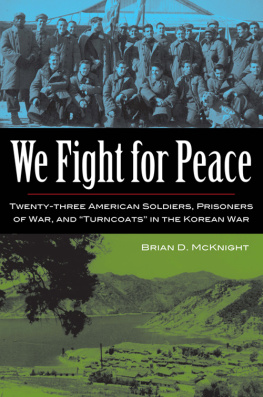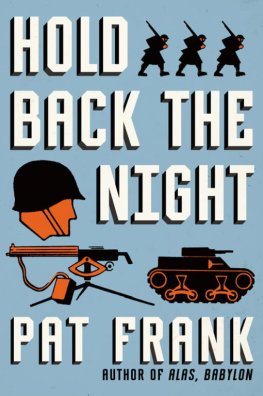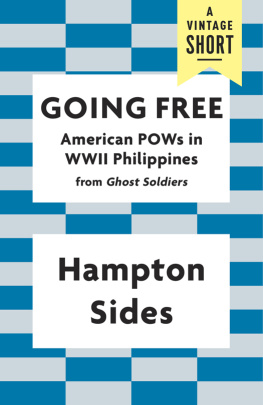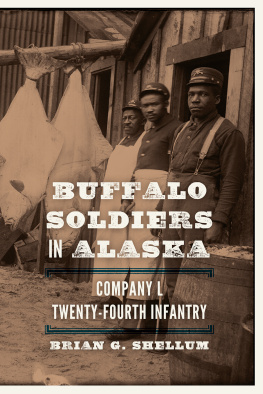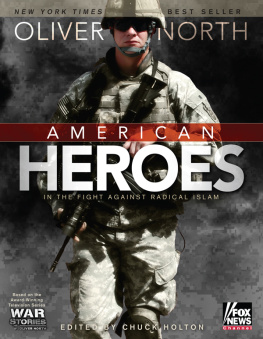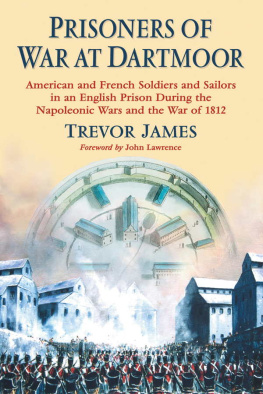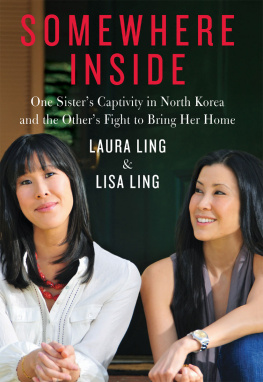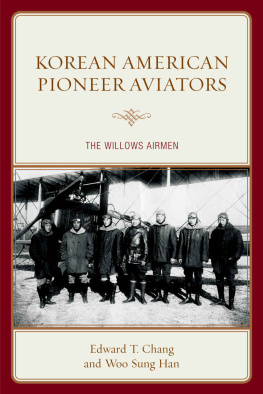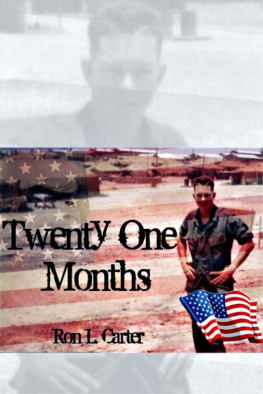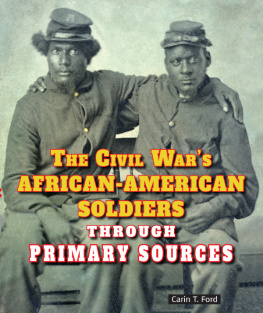We Fight for Peace
Twenty-three American Soldiers,
Prisoners of War, and
Turncoats in the Korean War

BRIAN D. MCKNIGHT
The Kent State University Press
Kent, Ohio
Dedicated to Lorenzo Ren Crowell,
19432014
2014 by The Kent State University Press, Kent, Ohio 44242
All rights reserved
Library of Congress Catalog Number 2013043350
ISBN 978-1-60635-207-6
Manufactured in the United States of America
With regard to the images in the collection of CEGES-SOMA, the author has, in spite of all actions taken, not been able to trace the origin of some of the images. Should the rightful claimants recognize themselves in these photographs they should contact the Kent State University Press, 1118 University Library, Kent, Ohio 44242.
Library of Congress Cataloging-in-Publication Data
McKnight, Brian Dallas.
We fight for peace : twenty-three American soldiers, prisoners of war, and turncoats in the Korean War / Brian D. McKnight.
pages cm
Includes bibliographical references and index.
ISBN 978-1-60635-207-6 (hardcover)
1. Korean War, 19501953Repatriation. 2. Korean War, 19501953Prisoners and prisons. 3. DefectorsUnited StatesBiography. 4. DefectorsChinaBiography. 5. Prisoners of warUnited StatesBiography. 6. Prisoners of warChinaBiography. 7. SoldiersUnited StatesBiography. 8. Korean War, 19501953Biography. 9. AmericansChinaBiography. I. Title. II. Title: Twenty-three American soldiers, prisoners of war, and turncoats in the Korean War.
DS921.2.M35 2014
951.904'27dc23
2013043350
18 17 16 15 14 5 4 3 2 1
Contents
When I was an undergraduate, I lived a substantial distance from school. As a result, I spent much time on campus between classes. One of the things I did to pass the time was to go to the library and read old newspapers on microfilm. I found the stories fascinating, especially those that seemed so relevant contemporarily but had been lost to history as the world changed. During one of these reading sessions, I found the story of Ed Dickenson, and from there I uncovered the stories of the rest of those American soldiers who refused repatriation at the end of the Korean Conflict.
As an historian whose primary area of research is the American Civil War, embarking on such a challenging journey as examining one of the most controversial and contentious eras of the twentieth century is a fearful prospect. Since discovering the topic and identifying its importance years ago, I have struggled with issues from laying out the story to writing a mass biography and addressing the finer intellectual nuances of the tale, while developing my own personal seminar in modern Chinese history in an attempt to better understand the era. In order to answer these and other questions, I have burdened some very good people along the way. Because they are all friends, I know my weak attempt at thanking them will be greatly appreciated.
My friend Bill Carter was perhaps my greatest advocate. He guided me through my first two books, helping me produce works that I think he would have been proud of; I began work on this one within a week of his death. It is the first book I have written without his wise counsel and it means a great deal to me as a result. As an old underdog himself, Bill always loved the topic and chastised me for putting it off. While his critiques often left me puzzled, I can now fully see his influence on my intellectual development.
Another old friend of mine and Bills, Fred Smith, contributed mightily to the story that follows. I initially asked Fred to co-author this with me, but doctoral studies prevented his participation. However, he remained my great friend throughout the process and helped shape the narrative stylistically and analytically. Additionally, Fred spent considerable time poring over newspapers in the library at the University of Southern Mississippi and in Hartford, Connecticut, looking for information that would eventually help me tell this story.
Although old friends have cast long shadows over this book, new friends have also had an influence. Randy Mills of Oakland City University initially undertook a study of Arlie Pate, but his other projects interrupted. When approached for basic information about the group, Randy eagerly provided copies and encouragement. Throughout the process, he has remained interested in the progress of the project and has freely given his support and suggestions. Sheila Miyoshi Jager of Oberlin College provided me easy access to her copies of the court martial records of Edward Dickenson and Claude Batchelor. Ed Dickensons granddaughter, Jennifer Dickenson, was interested in the story from its earliest days and I enjoyed meeting and corresponding with her throughout the project. Lewis Carlson, who has published much on the soldiers experiences during the Korean War, kindly sent me an unpublished copy of Clarence Adams memoir months before it was scheduled to appear in print. His gesture allowed me to finish parts of the manuscript well ahead of my own expectations. Jodi Foor and Rich Boylan at National Archives II, College Park, Maryland, provided important guidance and research assistance. Paul Edwards and Gregg Edwards of Graceland Universitys Center for the Study of the Korean War, were very gracious hosts during my brief research visit to Independence, Missouri. My friend and noted scholar of African American religion, Edward Robinson of Abilene Christian University, spent several hours with newspapers searching out elusive answers. Rachel Lewis, formerly of the University of Akron, similarly agreed to help my project by gathering some local newspaper information on two of the nonrepatriates that was otherwise unavailable to me. Ren Crowell, one of my former professors, has exhibited a steadfast interest in the project and has helped place it within the context of modern military history studies. Ron Suleski, of Harvard Universitys Fairbank Center, offered information about Morris Wills and put me in contact with Ezra Vogel, who supervised Wills during his time on the centers staff. Sidney Rittenberg, who spent most of his life in Maos China, answered several important questions and gave valuable insights into the motives of many of the men. Finally, physicians and friends Allen Mullins and Melanie Skeen provided answers to medical and nutritional questions.
Partway through the construction of this story, I relocated from the University of Virginias College at Wise, near the hometown of Ed Dickenson, to Angelo State University, in Texas, near the hometown of Claude Batchelor. At Angelo State, the late Guogiang Joe Zheng, an accomplished scholar of modern China, answered countless questions about the intricacies of Chinese history and culture thereby broadening my historical and philosophical interpretations. Arnoldo DeLeon, a leading scholar in Tejano history and an excellent editor, must be thanked for his assistance with several chapters. Robert Stiles served as the departments graduate assistant for the 20062007 academic year and helped identify and list the more than 3,300 repatriated American prisoners. Perhaps the most important research assistant on the campus of any regional university is the interlibrary loan librarian. At Angelo State, Sharon Weber works tirelessly to provide people like me with those things necessary for us to produce scholarly work.
My parents probably wonder why their son would choose to devote years of his life to studying this group of men, but they have always been supportive of my endeavors and appreciate the work I do. Similarly, my wife has aided in my development and continues to make the sacrifices that allow me to pursue my many projects. Although she has no real interest in history, Pam does understand my love for the subject and has put her fingerprints on each piece of scholarship I have produced, including coming up with the title of this book. Although I am not sure how she has contributed to this project, I must also thank my daughter, Devin. She has made me see the world in a new light, and has made me a better person along the way.

